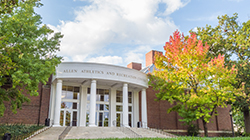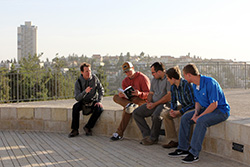Every student who steps onto this campus is looking at the legacies of previous Wabash men. The opportunities our students experience, the technology they work with, the dorms and fraternities in which they live, all of these are made possible by men who wanted to leave Wabash better than how they found it.
They believed in the possibilities of Wabash.

At his Chapel Talk on Thursday, the president’s Chief of Staff and Director of Strategic Communications Jim Amidon ’87 explained it to current students this way: “A tiny liberal arts college in West Central Indiana once said, ‘We have a place and a voice in higher education.’ We transformed the campus. And we did it through philanthropy.”
Wabash College is currently halfway between that comprehensive capital campaign, which began in 1998, and its bicentennial in 2032. Conversations are beginning to take place regarding ways to improve the Wabash College experience for future students.
The conversations and donations of the previous campaign raised $136 million and improved the campus in almost every aspect from new buildings, state-of-the-art technology, the establishment of immersion programs, and millions of dollars in scholarships.
Though today’s talks are still in their early stages, improving professional development, fraternities, campus life experience, and philanthropy are the pillars of the conversations.

“You won’t be surprised to know it’s going to take a lot of money to do that,” Amidon said. “It’s not just about participating in these big conversations…it’s about investing in those initiatives because you believe that tiny, little Wabash matters.”
Amidon explained there are several ways for a person to contribute to the future of Wabash. Financially, they can give on the campus’s upcoming Day of Giving. They can take part in conversations with prospective students who visit campus. They can tell their story – where they came from, what they’ve done, and where they plan on going.
The Princeton Review says we have the No. 1 alumni network in the nation, but that only continues if current students also transition to being active alumni.
“Is there really any question about the value of a Wabash education?” Amidon asked. “Don’t let our future be up to fate. My point here, gentlemen, is that you should take ownership of this place. After all, whose Wabash is it anyway?”